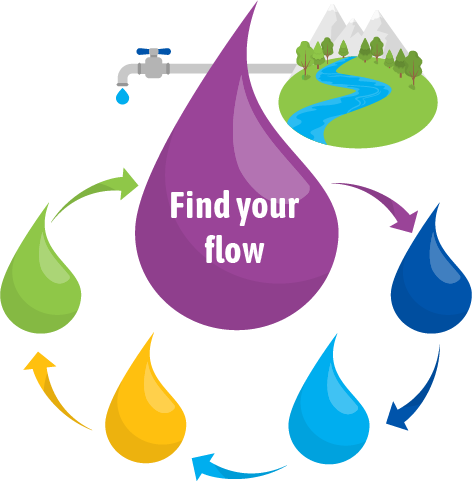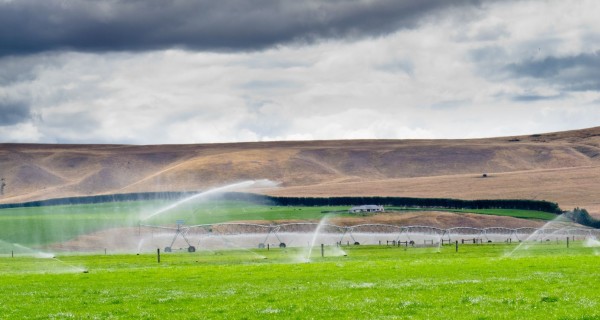ACTIVITY
Water issues and effects

Curriculum links : Levels 3-4
Science:
Nature of Science: Investigating in Science
Social sciences: Social studies
Activity Idea
In this activity, students explore the Waikato region’s water issues: their causes, effects and alternative possibilities.
By the end of this activity, students should be able to:
- identify issues for our freshwater sources and water bodies
- identify the effects, alternative solutions and future consequences of current issues.
What you need
- Water Issues and Effects - Activity 8 doc
- Student handout Kaitiakitanga
- Student handout Freshwater ecosystem health
- Student handout Thinking about causes and effects of issues
- Smart Water: Inquiry plan and student reflection – slideshow
FOR TEACHERS
Introduction
As the population of Waikato increases and water supplies are challenged with human impacts and climate change, a plentiful supply of drinking water in the future is not guaranteed. We need to protect and look after our drinking water to make sure that we have enough water to go around now and in the future.
Water issues in Waikato
The Waikato River is one of the most heavily used rivers in New Zealand.
Water from the Waikato River starts off very clear and blue, but by the time it reaches Hamilton, it is brown, cloudy and dirty looking. This is due to a variety of factors, including large amounts of bacteria, sediment and nutrients (such as phosphorus and nitrate). Learn more about water quality factors that affect the Waikato River in this article and interactive.
Even prior to human settlement, the water arriving at Port Waikato would not have been clear and completely free of microbes. The Waipā River contains a lot of sediment because of its geology, which is a natural phenomenon, leaving the lower reaches of the river muddy and brown.
However, levels of nitrogen and phosphorus are increasing about 1–2% per year. Bacteria levels are also high. The way we are managing the river today could have negative consequences for future generations of the region.;
Thinking about the Waikato River’s issues and impacts
The first section of the river from Lake Taupō to Hamilton includes hydro lakes, native bush, some settlements and farmed areas. The lower section goes through the Waipā district and is more intensively farmed, with many other influences. Hamilton City also sits alongside the river.
Due to changes in flow caused by dams, lakes, power schemes and other water use, water flows from Taupō to Orakei Korako in 5 weeks instead of the original 2–3 days. This encourages algal growth and makes the water more green. Read about changes to rivers as they move through catchments in this article.
Human impacts are significant for the Waikato River and are typically increasing with time. There is a strong need for more work and planning to improve the water quality of the river and restore its health. Many organisations are working in this space and making progress, but we all have an impact and will need to play a part in the restoration.
The following websites have more detailed information about the Waikato River’s health and water quality:
- Waikato Regional Council: How clean is the Waikato River?
- Waikato Regional Council: Downstream changes to water quality
Alternative possibilities
This activity encourages future problem solving, creative thinking, problem solving, critical thinking and deep learning. Students examine issues that are relevant to their local water bodies and explore the causes, effects, solutions and their possibilities, gaining insight and a better understanding of how to solve these issues.
Alternative possibilities could include reducing our water use, renewable energy solutions, climate-friendly travel options, waste minimisation, reducing food waste, composting, soil regeneration, planting, electricity efficient use, eating less meat, public education and more!

Principles of kaitiakitanga
1. Use the articles Kaitiakitanga and mana whakahaere and Understanding kaitiakitanga to learn more about kaitiakitanga.
2. Discuss the importance of kaitiakitanga for the future of waterways.
3. Use student handout Kaitiakitanga to draw an illustration or digital representation of what kaitiakitanga means to students.
Thinking about human impacts on local waterways
4. Explore the interactive Our use of water – impacts on water quality to learn more about how our use of water can affect water quality. Brainstorm water issues or human impacts that are relevant for your local awa.
5. View the student handout Freshwater ecosystem health. Encourage students to choose an issue from the infographic to unpack. Encourage discussion about the causes and effects of the issues and the impact they have on water quality, te mana o te wai and biodiversity.
6. Complete the student handout Thinking about causes and effects of issues. The current way of doing things is not the only way. Are there alternative possibilities that incorporate kaitiakitanga principles to meet the needs of the community?
7. Examples of possible answers are given in the student handout Thinking about causes and effects of issues – example answers. Unpack these with students and consider the future consequences of the alternative possibilities given in the right-hand column of the table.
Student reflection on inquiry
8. Smart Water: Inquiry plan and student reflection – slideshow slides 9–14 provide a space for students to reflect on their findings, summarise main points, find issues of concern and decide on next steps for learning. This information is useful for considering next steps and action in the activity Being smart with water.
Extension ideas
Use these Science Learning Hub resources to build on learning about freshwater issues:&
- Land use – impacts on waterways – article
- Water issues activity – student activity with a global focus
- Water pollutants on trial activity – student activity
This activity is part of a suite of resources that support Smart Water – a context for learning, which provides students and teachers with opportunities to connect with water and learn more about drinking water in the Waikato region. The science and mātauranga concepts that underpin Smart Water are transferable to other locations in Aotearoa New Zealand.
Smart Water is a partnership between Hamilton City Council, Waipā District Council and Waitomo District Council. It aims to foster a greater understanding and appreciation of water from source to tap and supports schools, organisations and communities to use water sustainably.
ADDITIONAL RESOURCES
Activities
- Land use - impacts on waterways
- Thinking about causes and effects of issues
- Thinking about causes and effects of issues - example answers
Articles
- Water quality - factors and issues
- Water catchments
- Waikato Regional Council : How clean is the Waikato River
- Waikato Regional Council: Downstream changes to water quality
- New Zealand's Environmental Reporting Series - Our freshwater 2023